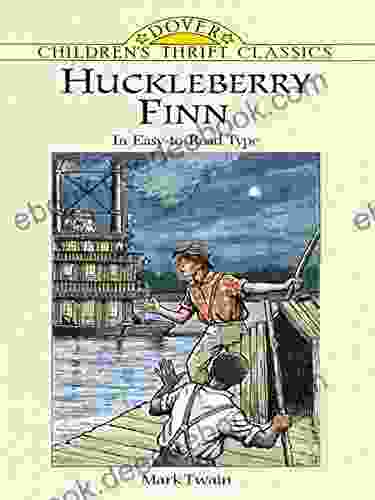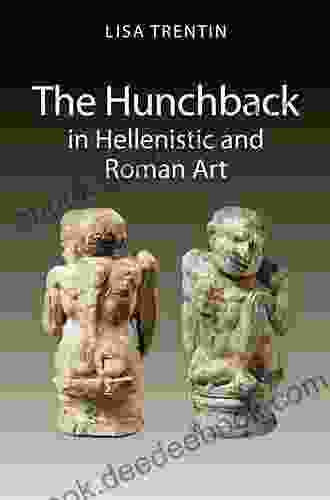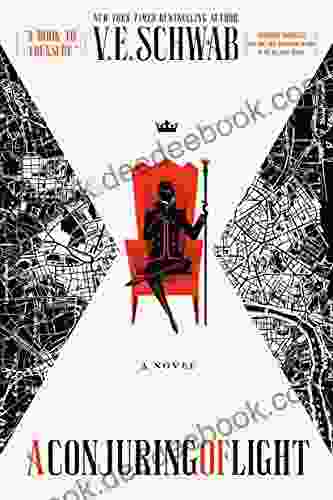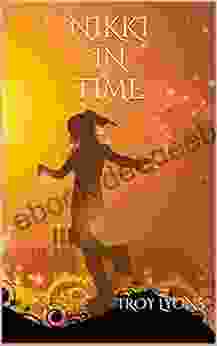A Comprehensive Guide for Designers and Directors: Inspiring Creativity and Collaboration

The relationship between designers and directors is crucial for the success of any creative project. When these two roles work together effectively, they can create truly remarkable work that resonates with audiences and leaves a lasting impact.
4.3 out of 5
| Language | : | English |
| File size | : | 4357 KB |
| Text-to-Speech | : | Enabled |
| Screen Reader | : | Supported |
| Enhanced typesetting | : | Enabled |
| Word Wise | : | Enabled |
| Print length | : | 206 pages |
However, achieving this level of collaboration and creativity is not always easy. There are a number of challenges that can arise, such as different communication styles, differing perspectives on the creative process, and power imbalances.
This guide is designed to help designers and directors overcome these challenges and build a strong, productive partnership. We will discuss the following topics:
- The importance of visual storytelling
- The power of empathy in design
- How to build strong relationships
- The importance of project management
- Understanding team dynamics
- Effective communication strategies
- Leadership and the creative process
The Importance of Visual Storytelling
Visual storytelling is a powerful tool that can be used to communicate complex ideas and emotions in a way that is accessible and engaging. When designers and directors work together to create a visual narrative, they can create work that is truly memorable and impactful.
There are a number of elements that go into effective visual storytelling, such as:
- Composition: The way that the elements of a design are arranged can create a sense of balance, movement, and tension.
- Color: Color can be used to evoke emotions, create visual interest, and guide the viewer's eye.
- Lighting: Lighting can be used to create mood, atmosphere, and depth.
- Typography: The choice of font and type style can convey a message and create a specific tone of voice.
When designers and directors understand the principles of visual storytelling, they can work together to create work that is both aesthetically pleasing and effective at communicating a message.
The Power of Empathy in Design
Empathy is the ability to understand and share the feelings of another person. It is a critical skill for designers and directors, as it allows them to create work that is responsive to the needs and emotions of their audience.
When designers and directors are empathetic, they are able to:
- Understand the motivations and desires of their audience
- Create work that is relevant and meaningful
- Build a connection with their audience
There are a number of ways that designers and directors can develop their empathy skills, such as:
- Observing people: Pay attention to the way people interact with the world around them. Notice their body language, facial expressions, and tone of voice.
- Talking to people: Ask people about their experiences, their hopes, and their fears. This will help you to understand their perspectives and to see the world through their eyes.
- Reading: Read books, articles, and blog posts about empathy and design. This will help you to learn more about the theory and practice of empathy.
When designers and directors are empathetic, they can create work that is truly human-centered. This work is more likely to be successful because it resonates with the needs and emotions of the audience.
How to Build Strong Relationships
A strong relationship between the designer and the director is essential for the success of any creative project. When these two roles have a good working relationship, they can communicate effectively, resolve conflicts, and support each other's creativity.
There are a number of things that designers and directors can do to build a strong relationship, such as:
- Communicate regularly: Make sure to communicate regularly with each other, both formally and informally. This will help to build trust and rapport.
- Be respectful of each other's opinions: Even if you disagree with each other, it is important to be respectful of each other's opinions. This will help to create a positive and collaborative environment.
- Be supportive of each other's creativity: It is important to be supportive of each other's creativity. This means being open to new ideas and taking risks.
When designers and directors have a strong relationship, they can create truly remarkable work together. This work is more likely to be successful because it is the result of a close and collaborative partnership.
The Importance of Project Management
Project management is a critical skill for designers and directors. It helps to ensure that projects are completed on time, within budget, and to the required quality.
There are a number of project management tools and techniques that can be used to help designers and directors plan, track, and manage their projects. These tools can help to:
- Define the project scope: The project scope defines the boundaries of the project. It includes a description of the project's goals, objectives, and deliverables.
- Create a project plan: The project plan outlines the steps that need to be taken to complete the project. It includes a timeline, budget, and resource allocation.
- Track the project's progress: The project progress can be tracked using a variety of tools, such as Gantt charts and progress reports.
- Manage the project's risks: Risks can be identified and managed using a variety of techniques, such as risk assessment and mitigation planning.
When designers and directors use project management tools and techniques, they can increase the likelihood of success for their projects. This is because they are able to plan, track, and manage their projects more effectively.
Understanding Team Dynamics
Designers and directors often work as part of a team. It is important to understand team dynamics in order to work effectively with others.
There are a number of different types of team dynamics, such as:
- Cohesive teams: Cohesive teams are characterized by a high level of trust, cooperation, and communication. Members of cohesive teams are supportive of each other and work together to achieve common goals.
- Conflicted teams: Conflicted teams are characterized by a high level of disagreement, tension, and conflict. Members of conflicted teams may have difficulty working together and may not be able to achieve common goals.
- Apathetic teams: Apathetic teams are characterized by a low level of motivation and engagement. Members of apathetic teams may not be interested in the work they are ng and may not be willing to put in effort.
It is important to understand the team dynamics in order to work effectively with others. This will help to create a positive and productive work environment.
Effective Communication Strategies
Communication is essential for the success of any creative project. Designers and directors need to be able to communicate effectively with each other, with other members of the team, and with clients.
There are a number of effective communication strategies that designers and directors can use, such as:
- Active listening: Active listening is a technique that can be used to improve communication. It involves paying attention to what the other person is saying, both verbally and nonverbally, and then reflecting back what you have heard.
- Nonverbal communication: Nonverbal communication is a powerful way to communicate. It can be used to convey emotions, attitudes,
4.3 out of 5
| Language | : | English |
| File size | : | 4357 KB |
| Text-to-Speech | : | Enabled |
| Screen Reader | : | Supported |
| Enhanced typesetting | : | Enabled |
| Word Wise | : | Enabled |
| Print length | : | 206 pages |
Do you want to contribute by writing guest posts on this blog?
Please contact us and send us a resume of previous articles that you have written.
 Text
Text Library
Library Paperback
Paperback Newspaper
Newspaper Paragraph
Paragraph Sentence
Sentence Bookmark
Bookmark Bibliography
Bibliography Foreword
Foreword Synopsis
Synopsis Footnote
Footnote Manuscript
Manuscript Codex
Codex Tome
Tome Library card
Library card Narrative
Narrative Autobiography
Autobiography Memoir
Memoir Reference
Reference Encyclopedia
Encyclopedia Dictionary
Dictionary Narrator
Narrator Character
Character Resolution
Resolution Catalog
Catalog Card Catalog
Card Catalog Borrowing
Borrowing Archives
Archives Study
Study Scholarly
Scholarly Journals
Journals Rare Books
Rare Books Interlibrary
Interlibrary Literacy
Literacy Study Group
Study Group Thesis
Thesis Dissertation
Dissertation Storytelling
Storytelling Book Club
Book Club Theory
Theory Jessica Eissfeldt
Jessica Eissfeldt Gary Shteyngart
Gary Shteyngart Morley Winograd
Morley Winograd Jon Liebman
Jon Liebman Benjamin J Broome
Benjamin J Broome Stanfield Major
Stanfield Major Jean Power
Jean Power Sheila Fowler
Sheila Fowler Vladimir Nabokov
Vladimir Nabokov Randy Seiver
Randy Seiver Rosa Luxemburg
Rosa Luxemburg Joanna Williams
Joanna Williams R J Cregg
R J Cregg Osho
Osho Carolyn Harris
Carolyn Harris Optimistic Squirrel
Optimistic Squirrel Tina Agustiady
Tina Agustiady Jon Dean
Jon Dean Jonathan E Smith
Jonathan E Smith Corey Wayne
Corey Wayne
Light bulbAdvertise smarter! Our strategic ad space ensures maximum exposure. Reserve your spot today!

 John SteinbeckHuckleberry Finn Dover Children Thrift Classics: A Literary Treasure for All...
John SteinbeckHuckleberry Finn Dover Children Thrift Classics: A Literary Treasure for All... Esteban CoxFollow ·12.9k
Esteban CoxFollow ·12.9k Jesse BellFollow ·12.3k
Jesse BellFollow ·12.3k Jim CoxFollow ·12.4k
Jim CoxFollow ·12.4k Jayden CoxFollow ·14.4k
Jayden CoxFollow ·14.4k Ethan GrayFollow ·17.7k
Ethan GrayFollow ·17.7k Gavin MitchellFollow ·3.5k
Gavin MitchellFollow ·3.5k Hugh ReedFollow ·11.4k
Hugh ReedFollow ·11.4k Gabriel Garcia MarquezFollow ·14.8k
Gabriel Garcia MarquezFollow ·14.8k

 E.E. Cummings
E.E. CummingsThe Routledge International Handbook on Fear of Crime
Fear of crime is a serious problem that can...

 Fletcher Mitchell
Fletcher MitchellThe Hunchback in Hellenistic and Roman Art: A...
The hunchback, or kyphosis, is a physical...

 Victor Turner
Victor TurnerA Comprehensive Guide to Needle Felting for Moms:...
Needle felting, a captivating craft...

 Joseph Foster
Joseph FosterWhere is Scandinavia?
Scandinavia is a region in...

 Leon Foster
Leon FosterNovel Shades of Magic: A Masterpiece of Magical...
An Enthralling...
4.3 out of 5
| Language | : | English |
| File size | : | 4357 KB |
| Text-to-Speech | : | Enabled |
| Screen Reader | : | Supported |
| Enhanced typesetting | : | Enabled |
| Word Wise | : | Enabled |
| Print length | : | 206 pages |












